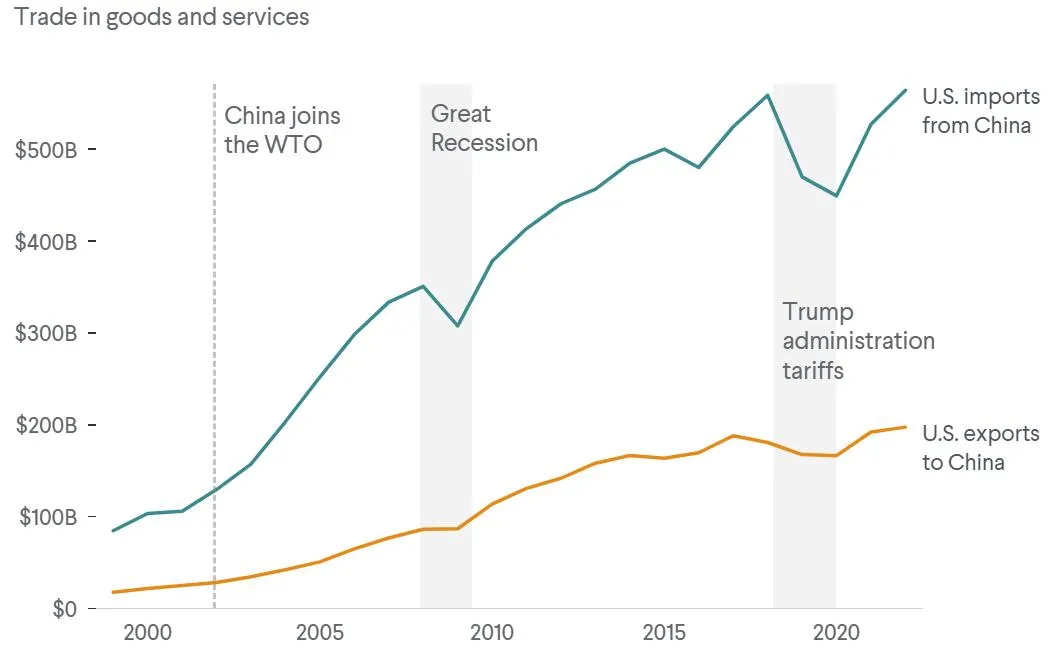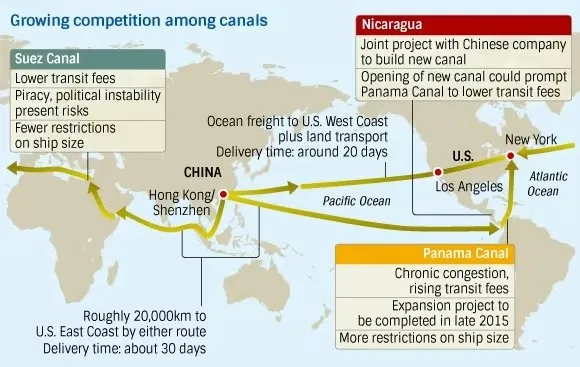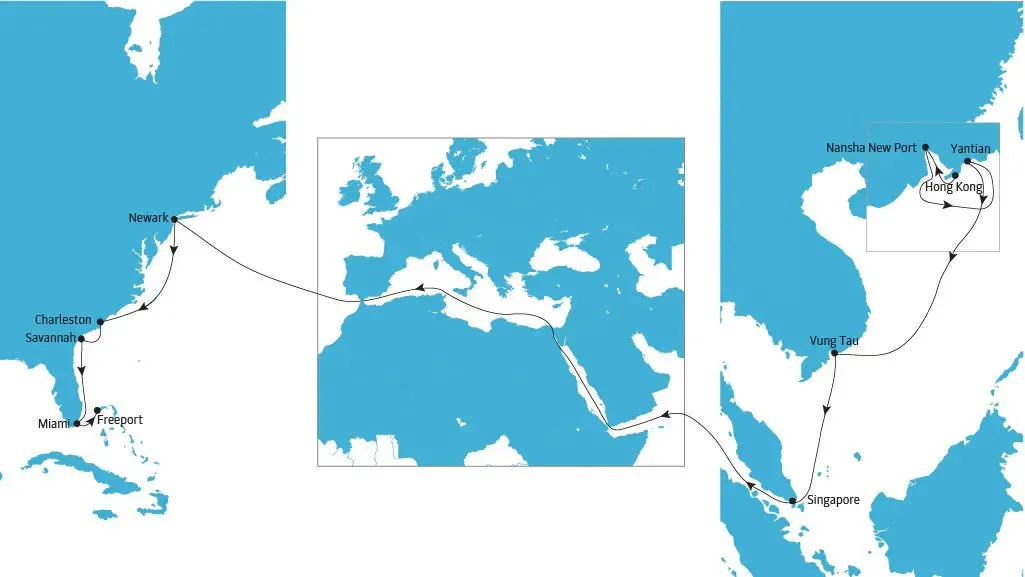- By TOP CHINA FREIGHT
- September 11, 2024
- Service, Shipping
Importing goods from China to the U.S. can be challenging due to the complex regulations involved. Understanding customs, costs, and transit times is crucial for U.S. importers. In this guide, we cover all the essential information you need to make the shipping process easier and avoid delays and unforeseen expenses.
Growing China-U.S. Trade
Trade between China and the U.S. has significantly grown, particularly after China joined the World Trade Organization (WTO), solidifying permanent trade relations. U.S. imports from China have risen from $100 billion in 2001 to over $500 billion in recent years, thanks to China’s role in the global supply chain. Chinese factories assemble products for export to the U.S. using components sourced worldwide.

While U.S.-China trade relations have been strained due to tariffs imposed since 2018, both countries remain vital trading partners. The complex supply chain continues to involve high-value technology products.
U.S. Import Licenses and Permits
The U.S. Customs and Border Protection (CBP) does not require a license for importing. However, certain products such as food, plants, animals, medications, and toys may require additional certifications from agencies like the FDA, EPA, and CPSC.
You’ll need an importer number, which is either your IRS business registration number or Social Security number for personal imports. To ensure compliance, contact the CBP office nearest to you before importing. You can find a directory of Ports of Entry on the CBP website.
U.S. Customs Entry
Navigating U.S. customs clearance involves proper documentation and timely paperwork. Depending on the value of your shipment, customs entry types vary:
| Entry Type | Freight Value | Details |
|---|---|---|
| De Minimis Entry (Section 321) | Under $800 | Duty-free, no customs bond or duties required. Simplified clearance process. |
| Informal Entry | $800 to $2,500 | Simpler clearance; customs bond may be required for certain goods. |
| Formal Entry | Over $2,500 | Detailed clearance process, requiring a customs bond. |
Customs Bond
A customs bond ensures compliance with U.S. laws, guaranteeing payment of duties and fees. There are two types of customs bonds:
- Single entry bond: For one-time use, costs around $100–$200.
- Continuous entry bond: Covers shipments for one year, priced at $350–$500, ideal for frequent importers.
Customs Tariff and Fees
For shipments under $800, no duties or taxes are applied. For higher values, tariffs are calculated based on the product’s HS code, which can be looked up on the HTS Code website. Additional fees include:
- Harbor Maintenance Fee (HMF): 0.125% of the value
- Merchandise Processing Fee (MPF): 0.3464% of the value (minimum $31.67, maximum $614.35)
Customs Broker
Hiring a customs broker simplifies the customs clearance process. They help with documentation, duty payments, and ensuring compliance with U.S. laws. At TCF, we provide comprehensive logistics services, including customs brokerage, so you don’t need to hire an external agent.
Customs Inspections
Around 3-5% of shipments undergo customs inspection, which can result in delays and additional fees. Inspection types include X-ray screenings or intensive exams, with costs ranging from $300 to over $1,000. To minimize risks, ensure your paperwork is accurate and complete.

Sea Freight to the U.S.
Sea freight is an economical option for large, bulky shipments. Major U.S. ports include:
- West Coast: Los Angeles, Long Beach, Seattle-Tacoma
- East Coast: New York, Savannah, Virginia
- Gulf Coast: Houston, Miami
Sea Freight Routes and Transit Times
Shipping from China to the U.S. via sea freight follows these main routes:
| Route | Transit Time | Details |
|---|---|---|
| Eastbound (West Coast) | 19-21 days | Most common route, crossing the Pacific Ocean. |
| Eastbound (Panama Canal) | 24-26 days | Ships to the East Coast via the Panama Canal. |
| Westbound (Suez Canal) | 27-28 days | Less common route, via the Suez Canal. |
Once goods arrive at U.S. ports, internal delivery may take an additional 1-3 weeks.

Container Weight Limits
For Full Container Load (FCL), the weight restrictions are:
- 20-foot container: Maximum 17 tons
- 40-foot container: Maximum 19 tons
Less-than-Container Load (LCL) shipments to the U.S. have a unique weight calculation, where dimensional weight is based on 363 kg/cbm.
Air Freight to the U.S.
Air freight is faster than sea freight, ideal for time-sensitive shipments. Key benefits include speed, reliability, and coverage. Major U.S. cargo airports include:
- Top Cargo Airports: Memphis (MEM), Louisville (SDF), Los Angeles (LAX), Miami (MIA), Chicago (ORD)
Air Freight Transit Times
Shipping from China to the U.S. by air takes 1-2 days for expedited services and up to 5-6 days for more economical options.
Air Freight Costs
The cost of air freight depends on factors such as size, weight, and the type of goods. Costs include:
- Base Air Rate (determined by weight and volume)
- Fuel surcharge
- Security surcharge
- Handling fees
- Customs charges
- Additional services (e.g., for hazardous or oversized goods)
Express Shipping to the U.S.
For shipments under 1 cbm or 200 kg, express courier services like FedEx, UPS, and DHL are the best options. TCF can help arrange discounted express shipping with reliable pickup and delivery.
What TCF Offers
TCF provides comprehensive shipping solutions from China to the U.S., including:
- Contracted sea and air freight rates
- Discounted courier services
- FCL/LCL shipping
- Door-to-door delivery
- Customs clearance and bond services
- Insurance and warehousing options
Request a free quote today and optimize your shipping process.
